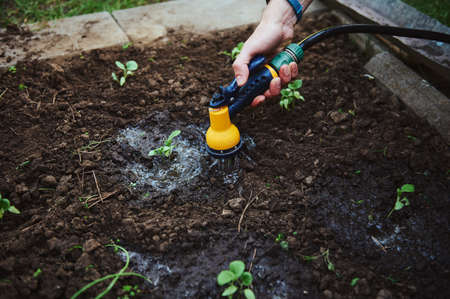Understanding Tool Buildup and Its Causes
If you’ve ever noticed your favorite wrench or saw not working as smoothly as it used to, tool buildup might be the culprit. Tool buildup happens when materials like grease, dirt, rust, or residue from projects accumulate on your metal tools. This isn’t just about looks—these layers can actually affect how well your tools work and how long they last. Common causes include leftover debris from woodworking, metal shavings, moisture exposure, and even using the wrong type of lubricant for the job. It’s important to pay attention to subtle signs such as sticky movement, visible discoloration, or a tool that simply doesn’t feel right in your hand anymore. Ignoring these clues can lead to permanent damage or costly replacements down the road. Addressing tool buildup promptly helps keep your tools sharp, safe, and ready for any project you take on around the house or in your workshop.
2. How to Safely Inspect Your Tools for Buildup
Inspecting your tools regularly is the first step to keeping them in good shape and preventing long-term damage from unnoticed buildup. Whether you’re working out of a home garage or a backyard shed, you don’t need fancy equipment—just a few simple techniques and some everyday items most folks already have around the house.
Common Signs of Buildup on Metal Tools
Buildup isn’t always obvious at first glance. Dirt, grease, sap, or rust can hide in crevices or under moving parts. Here’s what you should look for during your inspection:
| Sign | Where to Look | What It Might Mean |
|---|---|---|
| Dullness or Discoloration | Blades, edges, handles | Possible rust or sap residue |
| Sticky or Oily Feel | Grips, moving joints | Oil buildup or plant sap |
| Uneven Surface Texture | Shafts, tool heads, screws | Dried paint, hardened soil, corrosion |
| Tight or Squeaky Movement | Hinges, pivots, ratchets | Buildup inside moving parts |
| Visible Debris or Flakes | All surfaces, especially seams | Dried mud, metal shavings, rust flakes |
DIY Inspection Techniques Using Everyday Items
You don’t need a workshop full of gadgets to do a thorough check. Here are a few homegrown ways to spot hidden trouble:
- Papertowel Test: Wipe down your tool with a white papertowel. Stains or residue left behind reveal unseen buildup.
- Cotton Swab Check: Run a cotton swab along joints and seams to uncover grime in hard-to-reach spots.
- Good Lighting: Use natural daylight or a flashlight to inspect shadows and crevices where buildup likes to hide.
- Magnifying Glass: For small hand tools or pruners, a basic magnifier helps expose pitting or tiny rust spots early.
- Scent Test: Odd smells (like mildew or burnt oil) can point to organic growth or old lubricants stuck on the metal.
Tips for Safe Inspection Without Scratching Metal Surfaces
- Avoid using abrasive pads during inspection—opt for soft cloths instead.
- If you need to probe tight spaces, use wooden toothpicks rather than metal picks to prevent scratching.
- If you spot stubborn buildup but aren’t sure what it is, make note of the area and address it with gentle cleaning methods before resorting to anything harsh.
The Bottom Line on Regular Checks
A quick once-over every few weeks will help catch buildup before it becomes a real headache. These inspection habits not only extend the life of your tools but also keep your projects running smoothly—and that’s something every home grower and DIYer can appreciate.
![]()
3. Choosing the Right Cleaning Methods and Materials
When it comes to removing buildup from your tools without harming the metal, selecting the proper cleaning method is crucial. Fortunately, most American households and garages are stocked with a variety of cleaning options that can tackle everything from grease to rust. The key is to match the method to both your tools material and the type of buildup youre dealing with.
Common Household Cleaning Solutions
For light grime or oil, start simple. Dish soap mixed with warm water often does the trick for hand tools like wrenches and screwdrivers. A soft-bristled brush—think old toothbrush—can help loosen debris without scratching metal surfaces. For stubborn sticky residues, white vinegar or baking soda paste are safe bets, as they gently break down build-up while being mild on most metals.
Degreasers and Solvents
In garages, degreasers such as Simple Green or WD-40 are go-to solutions for heavier buildups like caked-on grease or sap. When using these products, always check if they’re safe for your tool’s finish and avoid prolonged exposure on coated or painted metal parts. Apply sparingly and wipe off thoroughly with a clean rag.
Avoiding Abrasives
It might be tempting to reach for steel wool or harsh scouring pads, but these can easily scratch and damage metal surfaces, especially softer metals like aluminum or chrome. Instead, opt for nylon scrub pads or microfiber cloths, which are less likely to leave marks.
Matching Method to Buildup Type
If you’re dealing with rust, household items like vinegar soaks or commercial rust removers can be effective—but always spot test first. For sticky adhesives or tar, rubbing alcohol is usually safe for metals but should be used with care around plastic handles or grips.
Safety First
No matter which method you choose, wear gloves to protect your hands from chemicals and sharp edges. Ensure good ventilation when working with solvents, and always follow label directions for any cleaning product.
Selecting the right cleaning method isn’t just about effectiveness—it’s about protecting your investment in quality tools for years of reliable use.
4. Step-By-Step Guide to Removing Buildup Safely
When it comes to cleaning your tools, safety and care for the underlying metal are top priorities. Here’s a straightforward, step-by-step guide designed to help you remove grime, rust, and residue from your tools while ensuring you don’t accidentally damage the metal beneath.
Gather Your Supplies
Start by assembling everything you’ll need. Here’s a quick checklist:
| Item | Purpose |
|---|---|
| Soft-bristled brush or old toothbrush | Gently loosens surface grime without scratching metal |
| Mild detergent or dish soap | Cleans away grease and dirt safely |
| White vinegar or specialized rust remover | Dissolves light rust and mineral deposits |
| Baking soda paste (baking soda + water) | Acts as a gentle abrasive for stubborn spots |
| Microfiber cloths or rags | For wiping and drying tools after cleaning |
| Protective gloves | Keeps hands safe from cleaners and sharp edges |
| WD-40 or light machine oil (optional) | Adds a protective finish after cleaning is done |
Step 1: Initial Cleaning
Brush off loose debris: Use a dry soft-bristled brush to gently remove any dust, dirt, or loose rust flakes. This prevents grinding particles into the metal during washing.
Step 2: Washing Away Grime
Create soapy water: Mix a few drops of mild detergent with warm water in a bucket. Dip your brush in this solution and scrub the tool’s surface, focusing on areas with visible buildup. For intricate parts or tight spaces, an old toothbrush works wonders.
Step 3: Targeting Rust and Tough Residue
Treat problem areas: If you notice patches of rust or stubborn gunk, apply white vinegar with a cloth or sponge and let it sit for 15-30 minutes. For extra-stubborn spots, use a baking soda paste as a gentle abrasive—rub it lightly onto the area and then wipe clean with a damp cloth. Avoid using steel wool unless absolutely necessary, as it can scratch softer metals.
Step 4: Rinse and Dry Thoroughly
Rinse off residues: Wipe all surfaces with a clean damp rag to remove any soap or cleaning agents. Immediately dry each tool thoroughly with a microfiber cloth to prevent new rust from forming.
Step 5: Apply Protective Finish (Optional but Recommended)
Add protection: Once your tools are completely dry, spray or wipe them lightly with WD-40 or machine oil to protect against future moisture and corrosion. Be sure to wipe off any excess oil before storing your tools.
Quick Safety Tips:
- Avoid harsh chemicals that can etch or discolor metal.
- If working with power tools or blades, always disconnect power sources before cleaning.
- Work in a well-ventilated area if using chemical cleaners.
This process ensures that your tools stay clean and functional without compromising their structural integrity—a win-win for any home workshop!
5. Best Practices to Prevent Future Buildup
Keeping your tools in top shape isn’t just about fixing problems as they come up—it’s about making smart, simple maintenance a part of your regular routine. Here are some practical tips that fit right into everyday American life, so you can avoid heavy buildup and extend the life of your metal tools.
Establish a Cleaning Routine
After each use, take a few minutes to wipe down your tools with a clean rag. For sticky residues or tougher grime, use a mild degreaser or even a splash of household vinegar. This quick habit goes a long way toward preventing buildup before it becomes a bigger issue.
Store Tools Properly
Don’t let moisture or dirt settle on your metal surfaces. Always store tools in a dry place—think garage cabinets, toolboxes, or wall racks. If you’re dealing with humidity, consider tossing in some silica gel packs or using a dehumidifier to keep the air dry.
Oil and Protect
A light coat of machine oil or WD-40 on metal parts helps create a barrier against rust and residue buildup. Make this step part of your monthly maintenance, especially for tools that see frequent use.
Inspect Regularly
Set aside time once a month to inspect all your tools for early signs of buildup or corrosion. Catching problems early means easier cleanup and less risk of permanent damage to your favorite gear.
Sharpen and Tune Up
Dull blades and worn-out edges can cause extra friction, leading to more debris sticking around. Keep cutting tools sharp and joints lubricated—this not only prevents buildup but also makes your work smoother and safer.
Make It a Family Habit
Get the whole household involved by teaching kids or partners how to care for shared tools. Not only does this lighten the load, but it also builds good habits that keep everyone’s projects running smoothly for years to come.
6. When to Seek Professional Help
Sometimes, no matter how careful or persistent you are, tool buildup can be beyond what a home remedy or basic cleaning can handle. It’s important to recognize when it’s time to call in an expert—especially if you’re dealing with expensive, specialized, or vintage tools that have sentimental or monetary value. If you notice deep corrosion, pitting, stubborn chemical residues, or mechanical issues after your attempts at cleaning, it’s best not to push further. Trying to force the issue might end up damaging the metal or reducing the tool’s lifespan. Professional restoration services have access to specialized equipment and knowledge that can safely restore your tools without causing harm. Consulting a pro can save you from hours of frustration and ensure your tools remain in top condition for years to come. Ultimately, knowing when to ask for help is just as important as knowing how to tackle buildup on your own.

